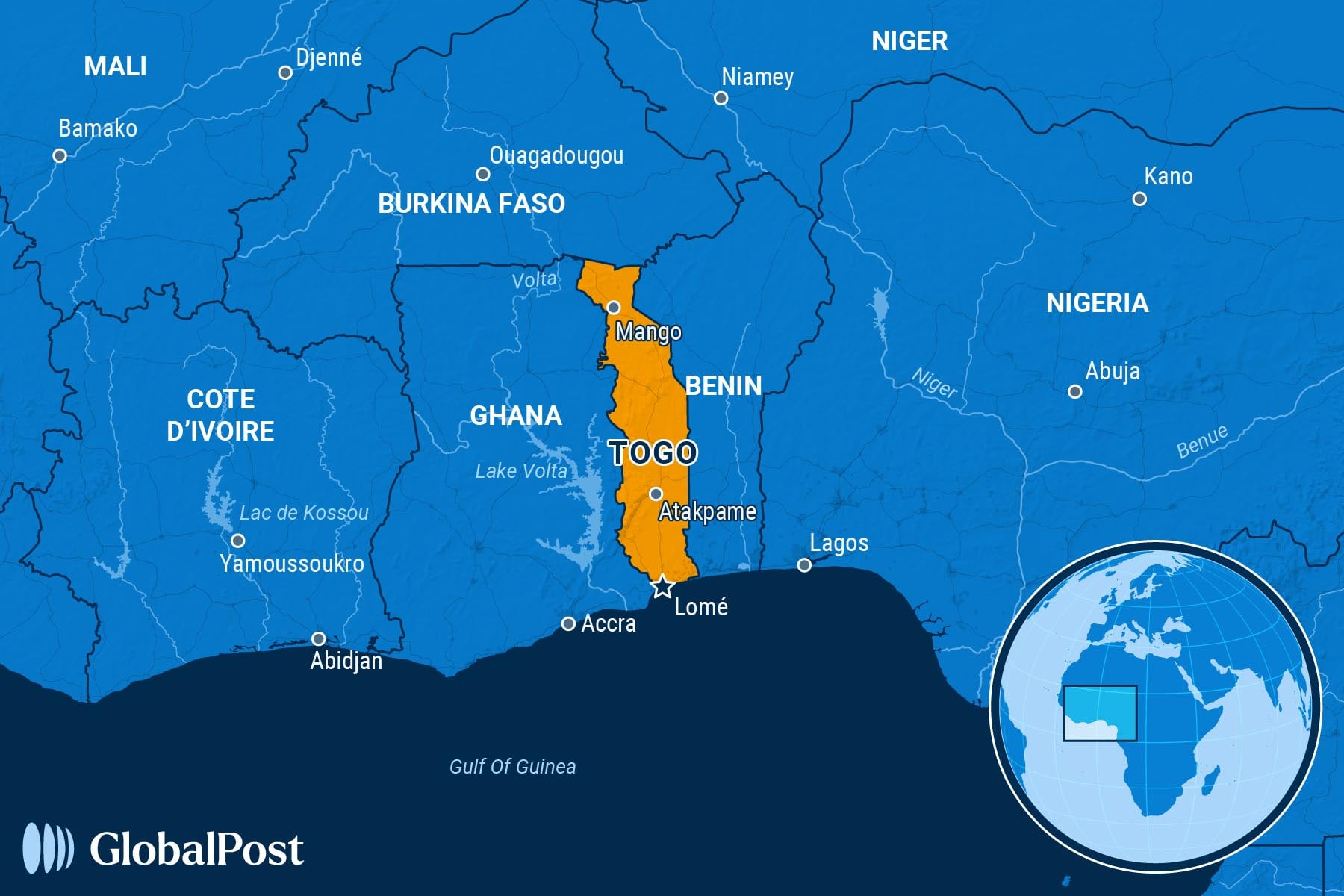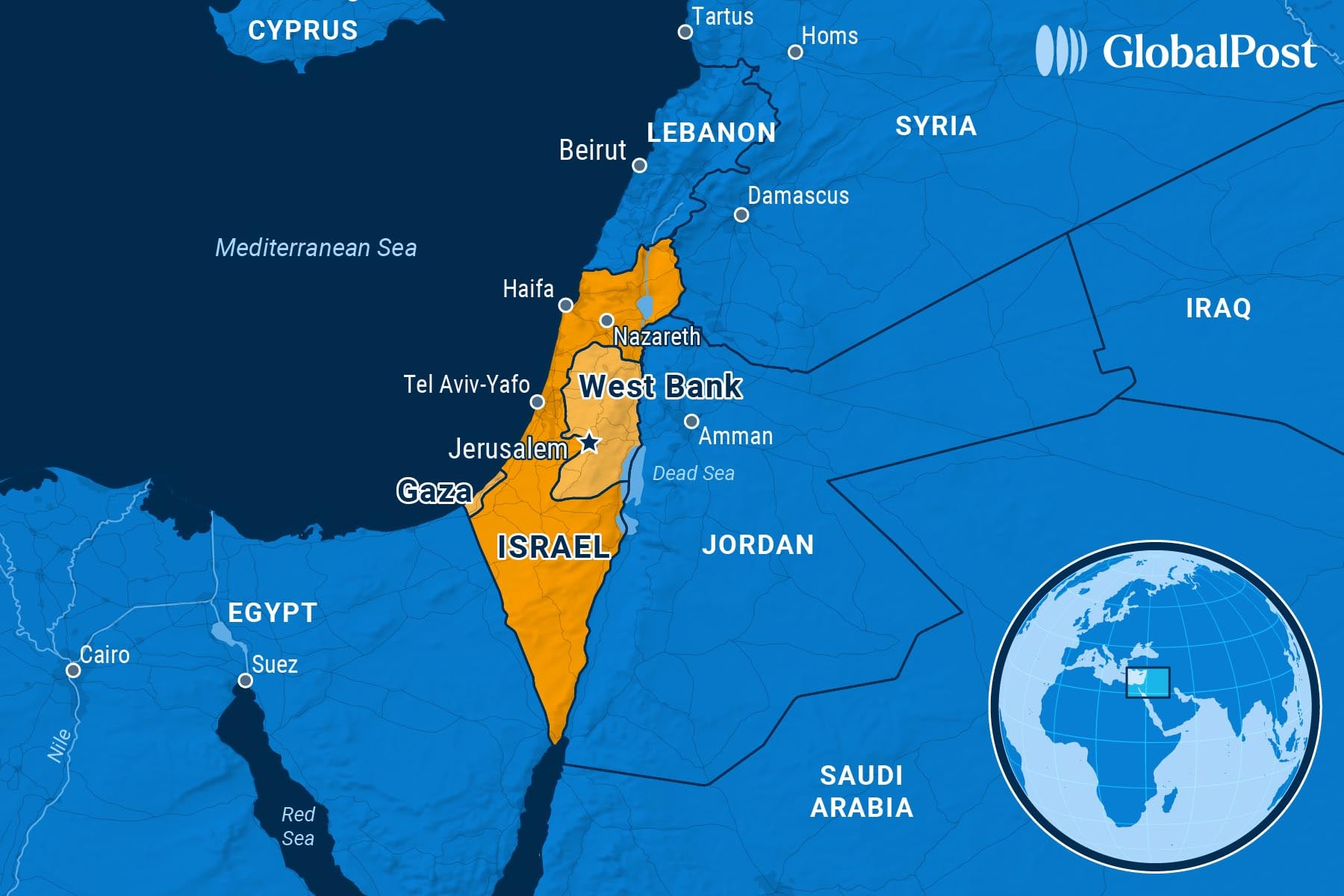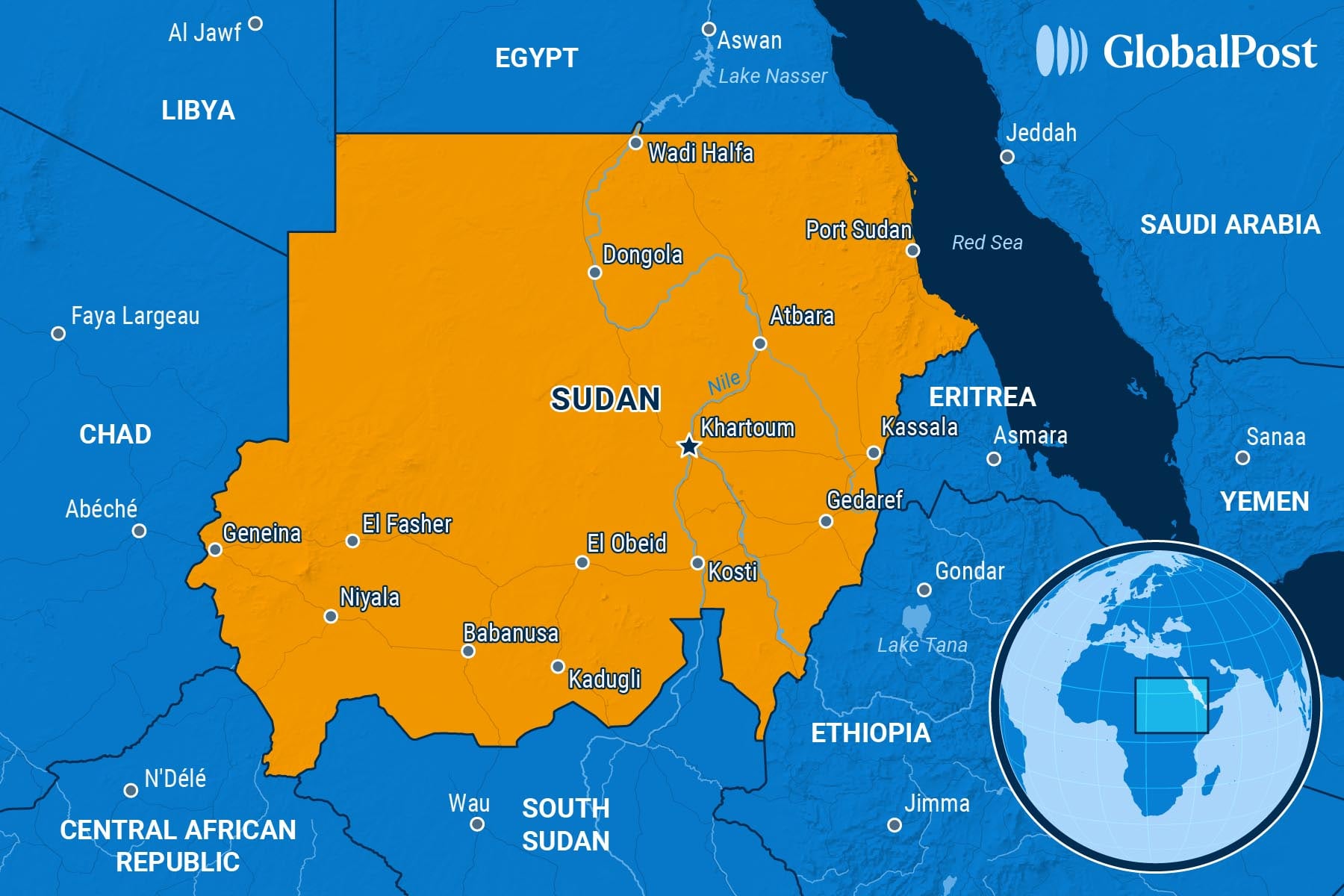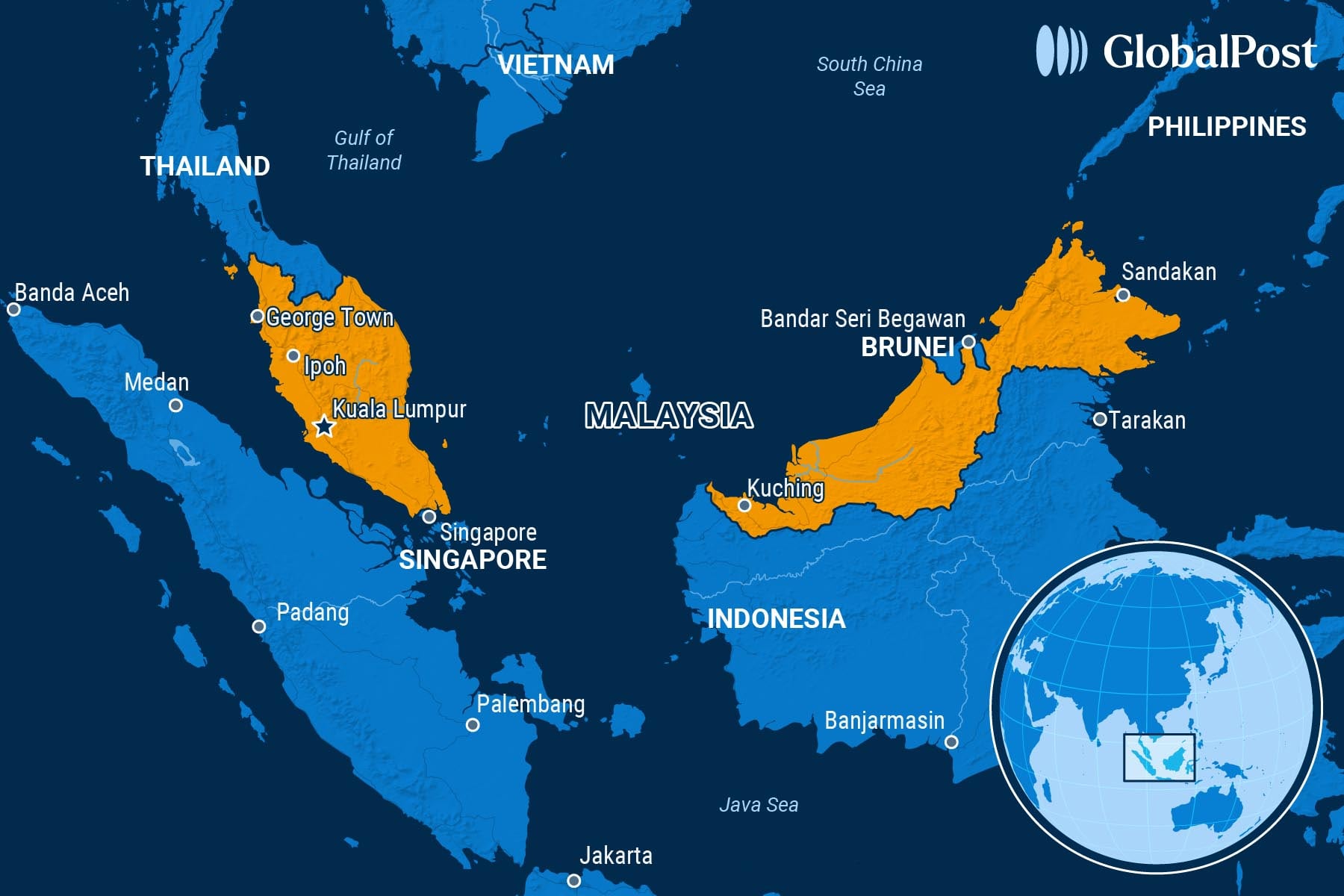Nowhere To Turn: Frustrated Voters in Togo Are Caught Between a Brutal Dictator, a ‘Useless’ Opposition, and ‘Violent’ Protesters
NEED TO KNOW
Nowhere To Turn: Frustrated Voters in Togo Are Caught Between a Brutal Dictator, a ‘Useless’ Opposition, and ‘Violent’ Protesters
TOGO
 In mid-July, Togo held an election to choose 1,527 municipal representatives. Polling stations, however, were largely deserted in Togo’s capital of Lomé and elsewhere.
In mid-July, Togo held an election to choose 1,527 municipal representatives. Polling stations, however, were largely deserted in Togo’s capital of Lomé and elsewhere.
Some voters stayed away out of fear of violence. Others said the elections wouldn’t change anything, so there was no point in voting.
“I’ve been voting since 1998, but this year is nothing like the others,” Sémon Aboudou told the Associated Press, standing outside of a nearly empty voting center in the capital’s Bè district, considered an opposition stronghold. “Even in 2019, there was more enthusiasm. Now people don’t see any change coming.”
There wasn’t any change coming from this election: The ruling Union for the Republic (UNIR) party, in power in some form for almost 60 years, won with about 75 percent of the vote.
The main reason for the voter apathy and their fear was the outbreak of violence in June ahead of the elections. Days of anti-government protests, rare in the country of nine million, were met with an ensuing crackdown that left at least seven people dead, more than 100 people detained, and others who are still missing.
Still, something has shifted in the country, say analysts.
The protesters, defying a ban on demonstrations, turned out in force because they were furious over a constitutional reform that took effect in May that changed the governance system. That reform gave the country’s longtime ruler, Faure Gnassingbé, even more power, and allows him to stay in office indefinitely. It also meant that the presidents of the country are no longer elected directly.
Gnassingbé took over the country after the death of his father, Gnassingbé Eyadéma, in 2005 without an election. His father was in power for almost four decades after assassinating the country’s first post-independence president in 1963 and launching two coups.
Since then, the West African country, one of Africa’s poorest, but also one becoming increasingly important as a maritime and transit hub in the region, as well as a gateway to the Sahel – it is currently battling jihadists in that northern part of the country – has seen repression, rigged elections, and leaders that run the country like absolute monarchs.
Before the protests erupted, anger had already been simmering over the spiraling cost of living in the country.
Meanwhile, the results of the reform are deeply troubling even for a country that sees harsh repression but few protests, analysts say.
“Togolese citizens have been stripped of their right to elect their president,” Paul Amegakpo, president of the Tamberma Institute for Governance, a Togolese think tank, told World Politics Review. “Even if elections were routinely rigged, removing (voters) altogether is deeply humiliating. And without term limits, Faure Gnassingbé can now remain in power for life.”
The protests were initially sparked by calls for demonstrations by the popular rapper known as Aamron, who had long been publicly critical of the reforms. But they grew after he was arrested and physically and psychologically abused in custody.
“Young people are exasperated by shortsighted and aimless governance, and by being held hostage by a regime incapable of providing the population with the basic necessities of life,” Bertin Bandiangou, a student who was arrested for opposing the government and tortured while in detention, told the Guardian. “Our message is clear: we no longer want a regime that imprisons our dreams and has terrorized an entire people for nearly six decades.”
The outrage over his arrest was further inflamed after the government shut down the Internet, suspended international media outlets, and cracked down violently on protesters, deploying security forces as well as local and foreign militias to do so.
For example, the parents of a 16-year-old boy found dead on June 27 told Amnesty International that members of the security forces in black uniforms had entered the neighborhood the previous day and fired tear gas and beat residents. The boy’s body was found along with that of another child, 15. The government, however, said the boys had “drowned,” according to “forensic analyses.”
Meanwhile, the protests, which continue to simmer, are unique in that they were not led by the opposition – which is seen as ineffective and co-opted by the government – but by the young, mobilizing via social media, analysts added.
“The Togolese are aware that there will always be repression, but they have reached a point where they can no longer stop themselves from expressing their frustrations,” political scientist Madji Djabakete told Deutsche Welle, adding that the protests to date were merely a “test” for a more structured uprising to come.
Until then, the oldest dynasty in Africa remains entrenched in power, with no end date in sight, say analysts. And voters, meanwhile, are often caught in the middle between the protesters and the regime.
“People are afraid, afraid of being attacked by protesters for legitimizing these elections, or afraid of being dispersed by security forces,” Edem Adjaklo, a voter in the capital, told Africanews. “They feel it’s pointless to vote because the results are always the same – predetermined.”
THE WORLD, BRIEFLY
Israel Airdrops Food Into Gaza, Critics Say It’s Vastly Insufficient
ISRAEL / WEST BANK & GAZA
 Israel began airdropping food into the Gaza Strip over the weekend, following mounting international criticism over its restrictions on aid and reports of mass starvation, with global leaders urging a ceasefire to end a “humanitarian catastrophe,” the Washington Post reported.
Israel began airdropping food into the Gaza Strip over the weekend, following mounting international criticism over its restrictions on aid and reports of mass starvation, with global leaders urging a ceasefire to end a “humanitarian catastrophe,” the Washington Post reported.
On Saturday, the Israeli military said it conducted its first direct airdrop operation into Gaza, delivering seven pallets of flour, sugar, and canned food using aircraft loaded in Jordan.
The Israel Defense Forces said Saturday that the airdrops and other measures were “aimed at improving the humanitarian response in the Gaza Strip, and to refute the false claim of deliberate starvation in the Gaza Strip.”
An Israeli military official said that Gaza was facing a “lack of food security” but denied a famine existed.
Israeli officials also said electricity would be restored to Gaza’s only functioning desalination plant that was previously shut down in March, according to Sky News.
Meanwhile, critics, including aid agencies, the United Nations, and numerous countries around the world, described the weekend airdrops as insufficient and potentially dangerous, citing past incidents in which food pallets killed civilians.
UN Relief and Works Agency (UNRWA) chief Philippe Lazzarini also said the move was “expensive, inefficient, and a distraction,” insisting that only the full lifting of the blockade would address what he described as “manmade hunger.”
The World Food Programme reported nearly one-third of Gazans had not eaten for several days, with more than 68,000 tons of food needed monthly – equivalent to 120 aid trucks per day.
The airdrops come amid ongoing global condemnation over the severe humanitarian crisis in Gaza, which has been decimated after nearly two years of fighting between Israel and Hamas.
Israel has been under intense pressure after it blocked food and medicine from entering the enclave starting in March, saying aid was benefiting Hamas – a claim rejected by both Western and UN officials.
In late May, Israel allowed the resumption of some aid deliveries, mainly through the Gaza Humanitarian Foundation, an organization created by former US intelligence and defense officials in consultation with Israel that has come under heavy criticism from international aid groups and others.
The US State Department said the group’s track record for aid delivery was “absolutely incredible.” But the GHF has been criticized for delivering insufficient aid and at distribution sites that have frequently seen deadly stampedes as Palestinians fight for food. Also, more than 800 Palestinians have been killed attempting to get food at the distribution sites after Israeli soldiers fired into crowds.
Israeli military officials say they are reviewing allegations of shooting and acknowledge that their soldiers fire “warning shots” at approaching crowds.
Meanwhile, ceasefire talks between Israel and Hamas stalled again this week after both sides withdrew delegations from Egypt and Qatar-led negotiations, Reuters added.
Officials, including Israeli Prime Minister Netanyahu and US President Donald Trump, blamed Hamas for the impasse, claiming the group rejected the latest US-backed proposal. Hamas, however, insisted it had submitted a viable counter-offer and accused Israel of undermining the talks for political reasons.
Sudan’s RSF Forms Rival Government, Raising Split Fears
SUDAN
 Sudan’s paramilitary Rapid Support Forces (RSF) and its allies announced over the weekend they would form a parallel government in RSF-controlled territories, a move that has sparked fears of the East African country splitting apart, the Associated Press reported.
Sudan’s paramilitary Rapid Support Forces (RSF) and its allies announced over the weekend they would form a parallel government in RSF-controlled territories, a move that has sparked fears of the East African country splitting apart, the Associated Press reported.
The newly-formed Tasis Alliance named RSF commander Gen. Mohamed Hamdan Dagalo – also known as Hemedti – as head of a 15-member sovereign council, which will serve as head of state in the new government, mainly overseeing the western region of Darfur.
Rebel leader Abdelaziz al-Hilu of the Sudan People’s Liberation Movement-North (SPLM-N) will act as Dagalo’s deputy, while former civilian official Mohammed Hassan al-Taishi is appointed prime minister.
The announcement took place in Nyala, the largest city in Darfur.
Regional governors were also named, including for areas currently held by the Sudanese army.
The new parallel government comes more than two years after Sudan plunged into civil war following a fallout between Dagalo and Gen. Abdel Fattah al-Burhan, head of the Sudanese Armed Forces (SAF).
The two men had previously shared power after the ouster of autocrat Omar al-Bashir in 2019. However, a 2021 coup by the two forces then ousted civilian politicians, sparking a war over troop integration during a planned transition to democracy.
The ongoing conflict has displaced millions, with tens of thousands killed and half the population facing famine, according to the United Nations.
Both the SAF and RSF have been accused of war crimes, with both Dagalo and Burhan sanctioned by the United States over their role in the conflict.
Saturday’s announcement came months after the RSF and allied groups signed a charter in February in Kenya that outlined plans for a secular “New Sudan” government, Reuters added.
The SAF and the internationally recognized government in Khartoum immediately condemned the RSF’s move over the weekend. Sudan’s foreign ministry called the new administration a “fake government” and urged the international community not to engage with it.
While Burhan has vowed to continue fighting until the army regains full control of Sudan, analysts warned that the formation of a rival administration risks further fragmentation.
Thousands Protest Against Malaysian Leader Over Broken Promises
MALAYSIA
 Thousands of Malaysians took to the streets of the capital, Kuala Lumpur, over the weekend, calling for Prime Minister Anwar Ibrahim’s resignation over accusations that he failed to curb rising living costs and deliver on promised political reforms more than three years after taking office, Al Jazeera reported.
Thousands of Malaysians took to the streets of the capital, Kuala Lumpur, over the weekend, calling for Prime Minister Anwar Ibrahim’s resignation over accusations that he failed to curb rising living costs and deliver on promised political reforms more than three years after taking office, Al Jazeera reported.
Saturday’s large-scale protest, organized by opposition parties, was the first major protest in Malaysia since Anwar took office following the 2022 general election. Protesters marched through the capital’s streets holding placards that read “Turun Anwar”, Malay for “Step down Anwar”.
Organizers said that around 500,000 people participated, while authorities estimated around 50,000 demonstrators.
Anwar came to power on a reformist platform, pledging to combat corruption and overhaul Malaysia’s political system. However, his administration has come under growing scrutiny for lagging on those reforms amid ongoing economic pressures.
Earlier this month, the government expanded sales and services tax, increased the price of electricity, and reduced fuel subsidies, according to the Straits Times.
While inflation and unemployment have remained low, many Malaysians have complained about lagging incomes and rising food costs.
Amid the public backlash, Anwar announced a series of measures last week that observers described as an attempt to dampen the protests.
The prime minister said all Malaysians aged 18 and over would receive a one-time $23.70 cash handout beginning Aug. 31. He also promised that 18 million motorists would soon be eligible to purchase subsidized medium-octane fuel at $0.47 per liter, down from $0.49.
DISCOVERIES
Shifting Hues
Forget the image of Earth as the “Blue Planet.”
In its early days, our planet may have actually been emerald-hued, according to a new study.
Scientists at Nagoya University in Japan suggested that more than 2 billion years ago, Earth’s ancient oceans were green thanks to their unique chemistry and the light-harvesting quirks of early microbial life.
In their paper, lead author Taro Matsuo and his team conducted a series of simulations that showed that these green oceans emerged sometime during the Archean Eon between 4 and 2.5 billion years ago – a period that saw the emergence of the first lifeforms and continents.
During this time, Earth’s early waters were heavily saturated with ferrous iron that was released both from rainfall eroding continental rocks and from undersea volcanic vents.
Then, some 2.4 billion years ago, the planet experienced the Great Oxidation Event when the early cyanobacteria began to perform oxygenic photosynthesis that released oxygen into the oceans and atmosphere.
But unlike modern photosynthesizers, these ancient microbes didn’t rely solely on chlorophyll. They also used an extra light-harvesting protein called phycoerythrin, which allowed them to soak up green light – then the most abundant light in the oceans, New Atlas reported.
The team noted that as the oxygen levels rose, it reacted with ferrous iron to form ferric iron, which is insoluble and precipitated as rust-like particles. These particles absorbed blue wavelengths, while water itself absorbed red – leaving green light to dominate the underwater landscape.
“Genetic analysis revealed that cyanobacteria had a specialized phycobilin protein called phycoerythrin that efficiently absorbed green light,” Matsuo said in a statement. “We believe that this adaptation allowed them to thrive in the iron-rich, green oceans.”
Further supporting this “green Earth” theory was a 2023 field trip to Japan’s Iwo Jima, where the research team observed green-hued waters around the volcanic island. These waters were colored by iron hydroxides, lending real-world support to their model of green Archean oceans.
But beyond painting a vivid picture of early Earth, the study could also change the way how scientists search for life on other planets.
If green oceans once signaled the rise of life here, they might do the same elsewhere.
“This leads us to think that green oceans might be observable from a longer distance, making them easier to detect,” Matsuo added.
